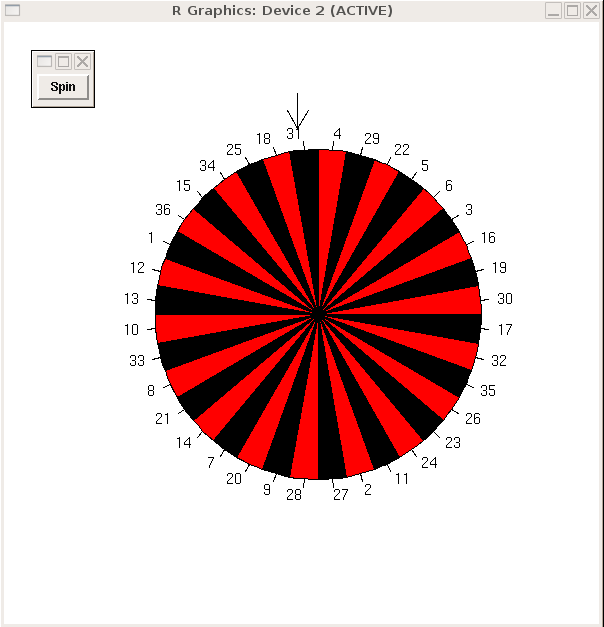As another toy project, I've written a program that tries to simulate
a roulette wheel. Unfortunately, rapidly changing the graph to provide
an animation-like effect brings out some of the shortcomings of the
R graphic model. However, if your computer is relatively fast, the
program may give the illusion of a roulette wheel.
Here's a screenshot:
 Here's the code:
Here's the code:
rotat = function(vals){
l = length(vals)
vals[c(2:l,1)]
}
spinn = function(...){
n = sample(40:80,size=1)
for(i in 1:n){
spin()
# If you don't see the wheel spinning, uncomment this line
# Sys.sleep(.04)
}
}
spin = function(){
thenums <<- rotat(thenums)
colrs = c('red','black')[thenums %% 2 + 1]
pie(rep(1,36),labels=thenums,col=colrs)
arrows(-.1,1.07,-.1,.9,xpd=TRUE)
}
require(tcltk)
main = tktoplevel()
tkwm.title(main,"Wheel")
onum = sample(seq(1,36,by=2))
enum = sample(seq(2,36,by=2))
thenums = as.vector(rbind(onum,enum))
colors = c('red','black')[thenums %% 2 + 1]
tkpack(tkbutton(main,text='Spin',command=spinn))
spin()
File translated from
TEX
by
TTH,
version 3.67.
On 17 Apr 2006, 11:12.
 Here's the code:
Here's the code: